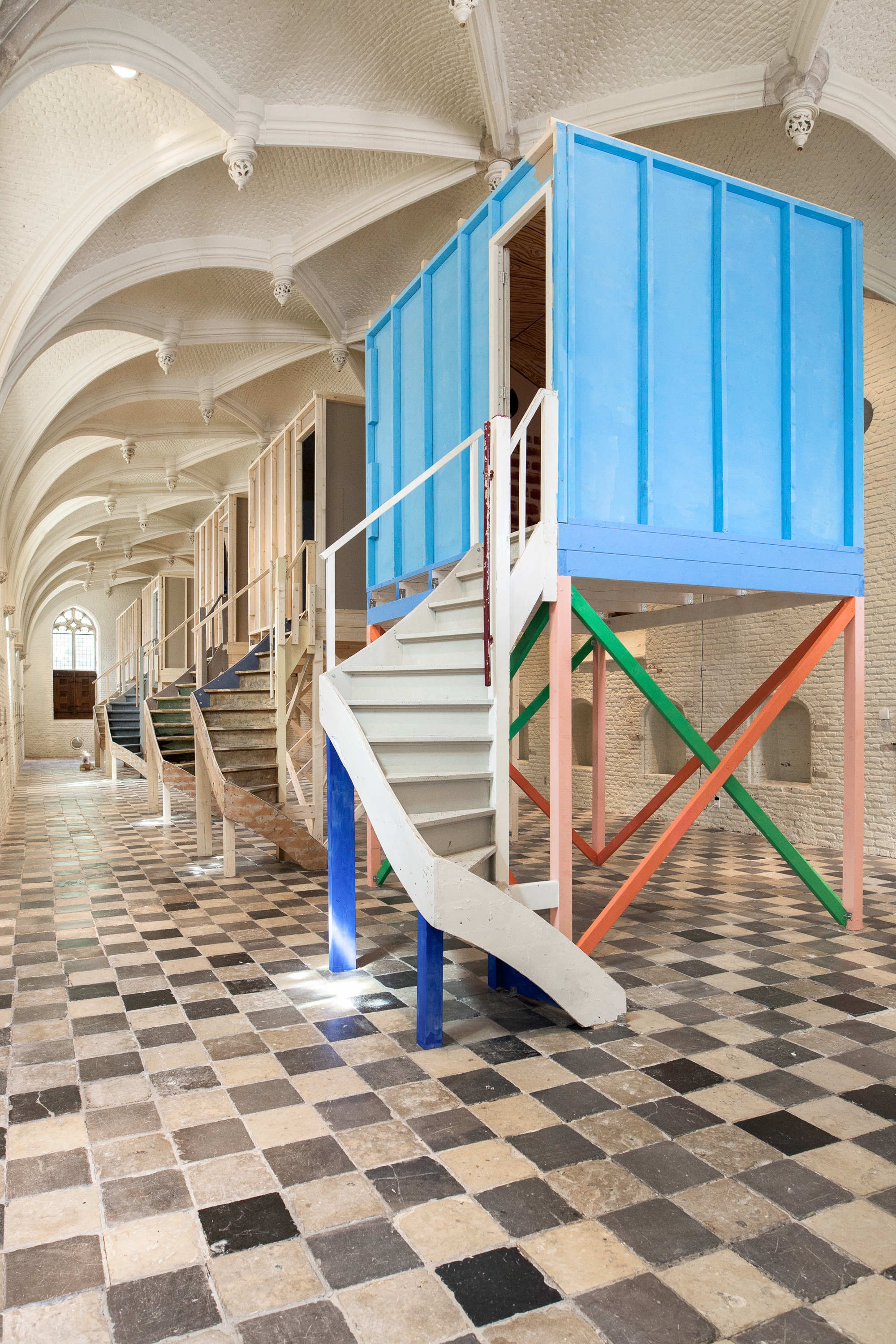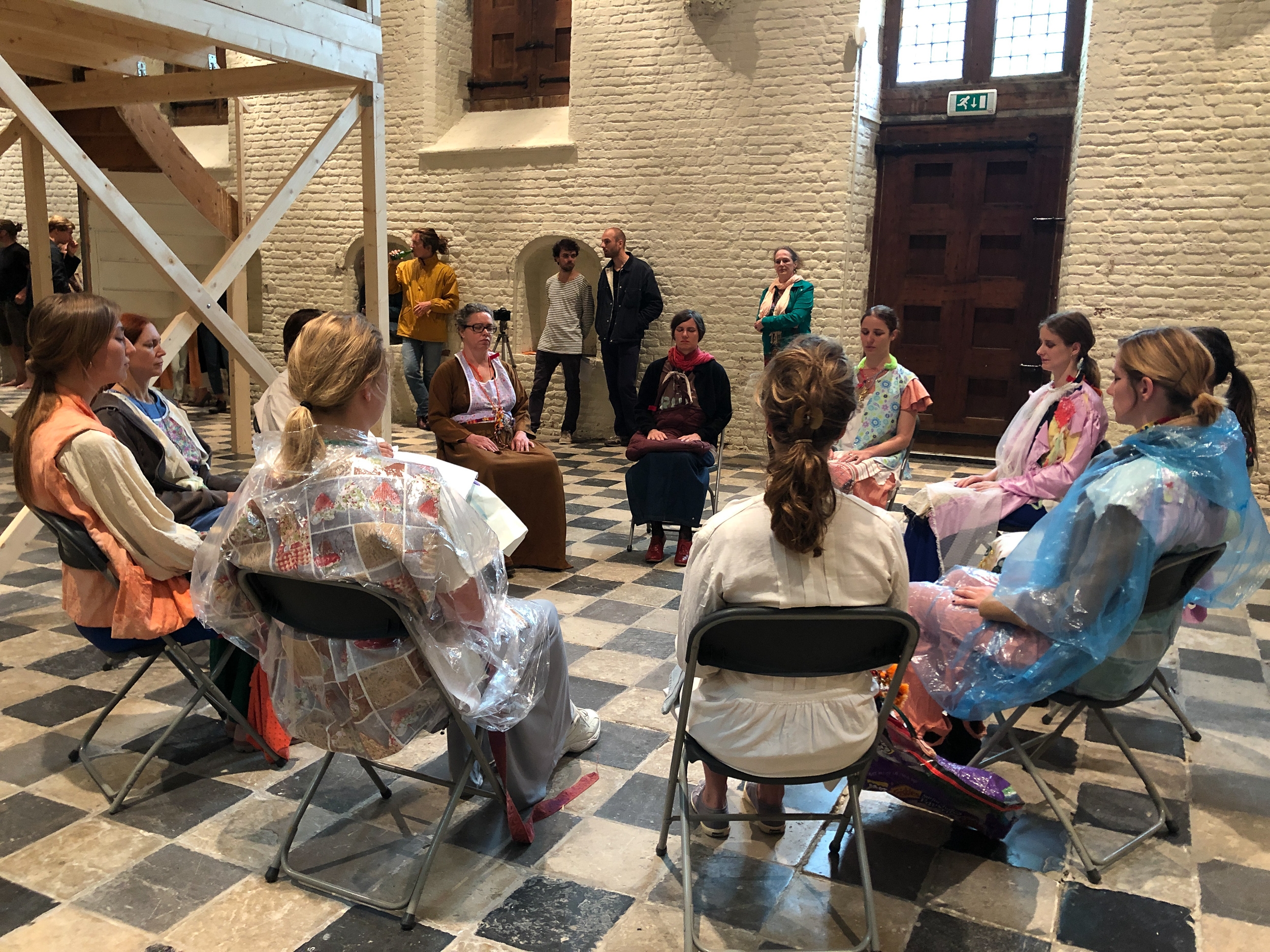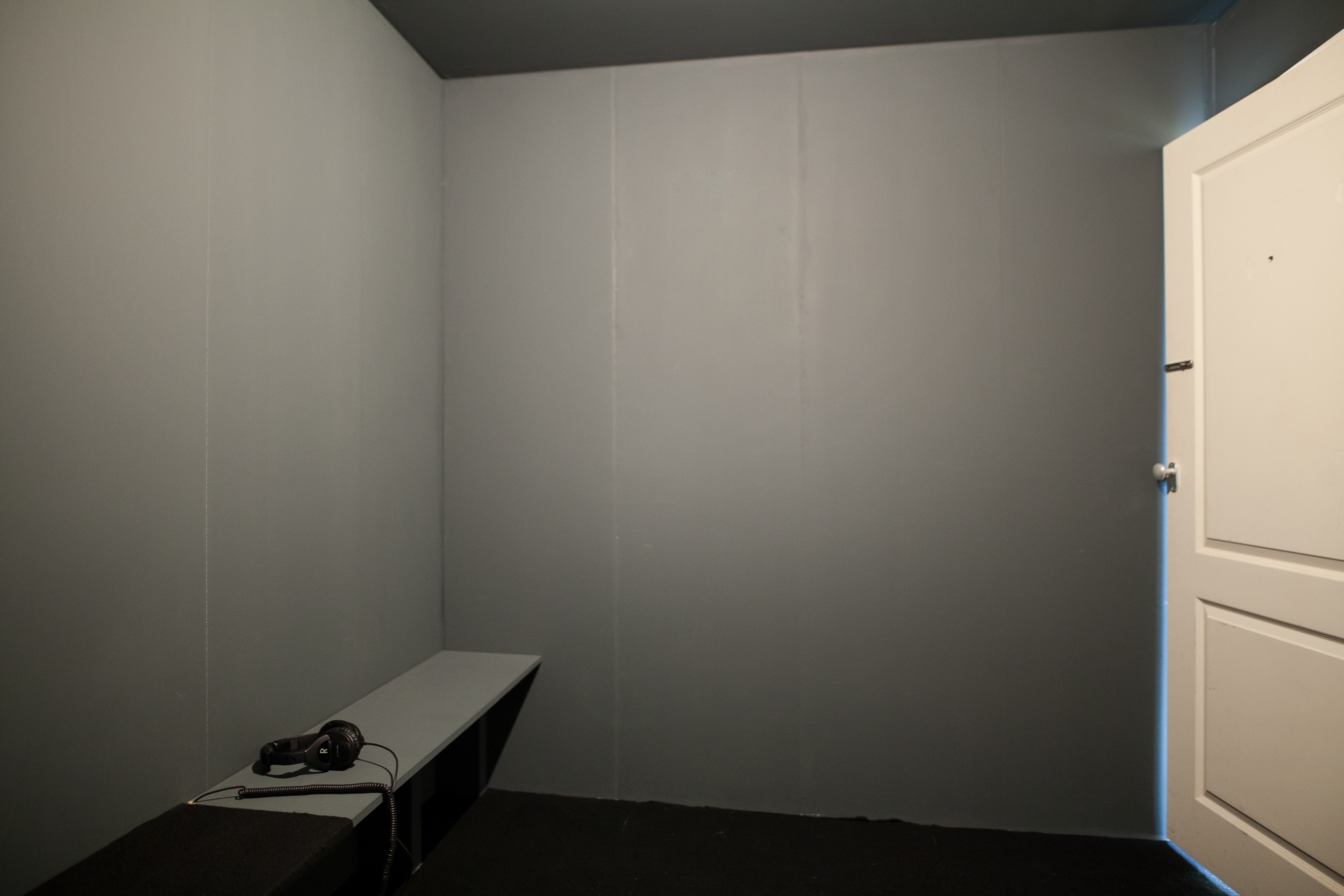Every Loft Needs a Sink
Lauri Ainala, Susan Cianciolo, Keren Cytter, Catharine Czudej, Jacob Dwyer, Manuela Gernedel & Fiona Mackay, Hanna-Maria Hammari, Niklas Taleb, Madelon Vriesendorp
Group exhibition
14 July – 15 September 2019
Vleeshal (Map)
Curator: Root Canal

The group exhibition Every Loft Needs a Sink is curated by the artist initiative Root Canal. The collective is familiar with the space of Vleeshal; Anders Dickson and Henna Hyvärinen participated in the group exhibition Paranoid House from July 1 to September 30, 2018; Frieder Haller performed in Henna Hyvärinen's performance at the opening of this exhibition; and all four have been to Middelburg several times to attend Vleeshal exhibitions and activities.
They met in 2017 when they were all selected for a two years residency at De Ateliers and moved to the same apartment in Amsterdam. They started their exhibition practice in their attic. Upon leaving their apartment, the initiative has embraced a nomadic identity.
For the exhibition at Vleeshal, Root Canal explored the weird terrain between varying systems of how information, objects and memories are categorized. This is elicited in the act of rebuilding the original Root Canal exhibition space: a group of life-sized attic spaces hovered in the late Gothic architecture of Vleeshal. The indexing of objects and data is demonstrated in the way that individual artists and positions inhabit the attic space; thus illustrating these differing methods and characteristics.
Over time the attic—or loft—has slipped into an interesting discourse for economic consideration. Originally used as storage, the attic was affordable and often rented by artists as studios and homes. Accompanying the gentrification and rising number of people moving to the city, the attic gradually transitioned from undesirable to luxurious. Today the idea of the studio loft is synonymous with what we envision as a fancy living situation in a busy city.
In homage to their first site, Root Canal aimed to utilize the attic space through the reconstructed versions of it as a psychic substitute for the mind. In Vleeshal, the participating artists were partitioned into both solo and group presentations. Looking to Gaston Bachelard’s writing on the appearance of the attic in dreams, it is recognized as the seat of enlightenment and perhaps also as a collective consciousness. By further consideration of its use again in the waken life as a recess or cavity in the house-body, it functions more as a niche for secrets, and a place to protect treasured items. Further still, could it not also be the location where manifestations of psychologically repressed experiences appear?

Trailer by Root Canal
Commissions
Upstairs
Manuela Gernedel & Fiona Mackay
Installation
2019

For the first attic, Root Canal invited the artist duo Manuela Gernedel & Fiona Mackay, because they were interested in seeing how Manuela and Fiona would make this structure their own. They saw their show Coma at VIS in Hamburg in 2018 and were impressed by their energetic and immersive way of taking over spaces. Manuela and Fiona always have a unique approach to what they paint and to how they alter a space referring to the surroundings of the space they’re exhibiting in.
Costumes from Scene 10, The Celebration and Games
Susan Cianciolo
Performance, Installation
2019

With this exhibition Root Canal wanted to show that the attic can be read as a metaphor of the mind. In one loft they wanted to shed light on the action of arranging: the more logical part of the mind. It refers to the attic as a place where things are being kept and found. Upon further research it was exciting for Root Canal to learn how Susan sources the fabrics, handling them through various methods: commissioning them from seed to cloth, receiving them as gifts, or coming across them as recycled finds. They were intrigued by the way that the dresses seem to display means of collaging. Simultaneously they seem to function within the painterly discourse and also in the realm of arranging and collecting of specific materials. Susan's work is often inspired by her own memories. Each piece is separate and distinct, but the overarching structure of how the work is arranged becomes almost as important as the works themselves. The costumes are intended to be used. At the opening performers wore them while being in a meditation session with the artist in the center of the Vleeshal.
Goin’ mad
Jacob Dwyer
Audio, Installation
2019

Jacob Dwyer was the first artist Root Canal agreed upon to invite for this show. Earlier this year in an exhibition in Amsterdam they discovered that Jacob is not only a great video artist, but also makes stunning audio pieces. His audio piece Goin’ Mad, that he made specifically for this show at Vleeshal, progresses through the anxious and never ending mantra:
The words come from a song of the same name. Goin’ Mad was the fifth track of Wiley’s debut album, Treddin’ On Thin Ice (2004), in which he flows over a timeless grime beat, produced by himself. In combining the recordings made on the site in which they will be heard, Dwyer creates a sonic space in which the voices (and lyrics) come to life, merging with the fabric of the building. The old wooden doors flanking the hall, that were once used to keep the meat inside cool, become a surface for a crazed character to thump and provide metronome for these vague internal anxieties, from the world outside the attic (brain). Goin’ Mad was recorded using binaural microphones. These mirror the acoustic shadowing that our head provides, thus when listened to from the same position in which they were recorded, we can align with that perspective. It becomes extremely personal. Root Canal thought it would be nice to have this intense work that activates the attic space differently. The audience could really feel the space. It was getting closer to a claustrophobic feeling.
Persons
Lauri Ainala
Susan Cianciolo
Keren Cytter
Catharine Czudej
Jacob Dwyer
Manuela Gernedel & Fiona Mackay
Hanna-Maria Hammari
Niklas Taleb
Madelon Vriesendorp
Root Canal
Series
From time to time Vleeshal invites guest curators to organize exhibitions in the Vleeshal or to develop other projects. By doing so, we aim to welcome new perspectives and contribute to talent development.
This project is made possible by the generous support of Mondriaan Fonds and the municipality of Middelburg.

